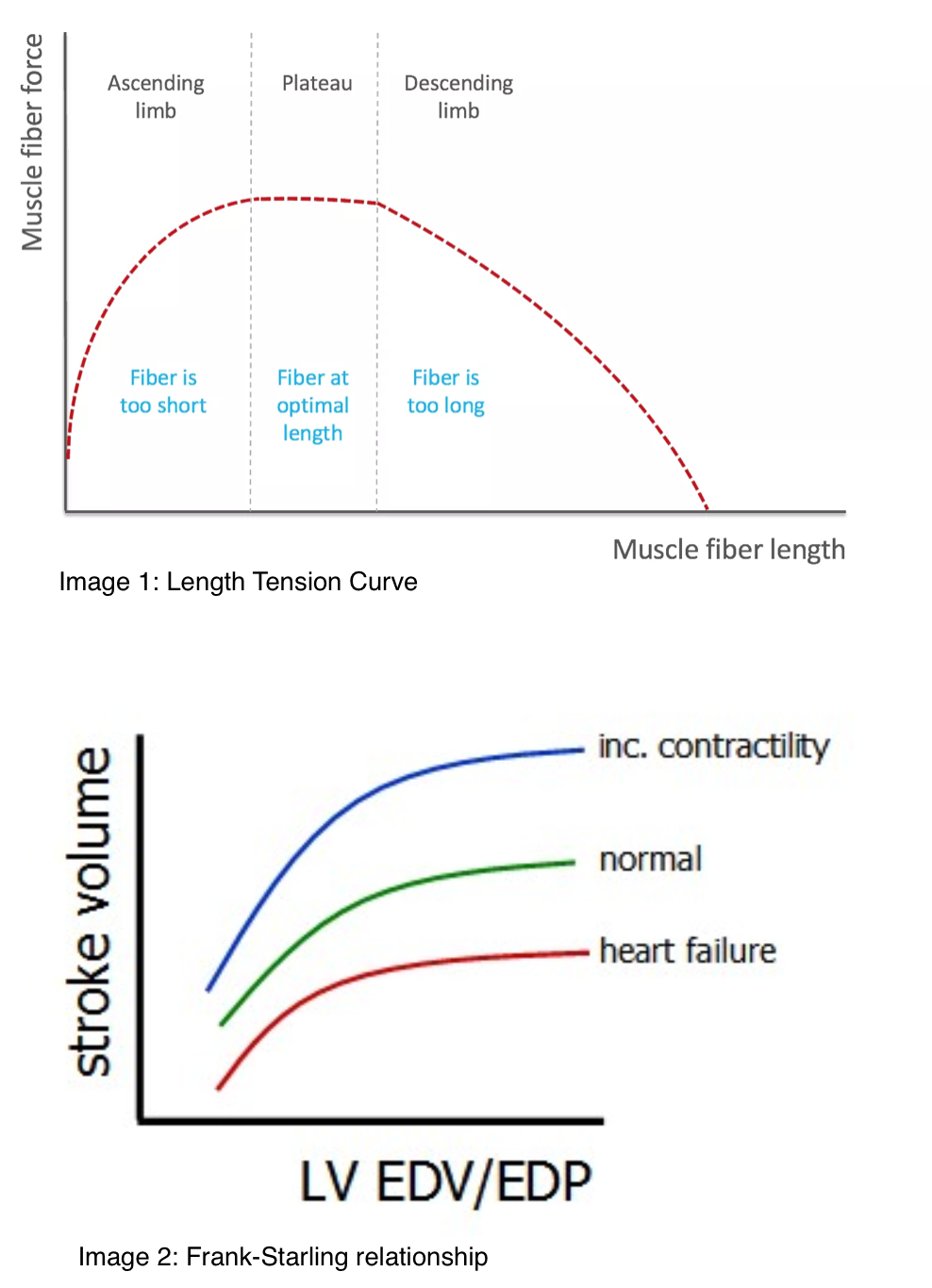[1]
Kuhtz-Buschbeck JP, Drake-Holland A, Noble MIM, Lohff B, Schaefer J. Rediscovery of Otto Frank's contribution to science. Journal of molecular and cellular cardiology. 2018 Jun:119():96-103. doi: 10.1016/j.yjmcc.2018.04.017. Epub 2018 May 1
[PubMed PMID: 29727607]
[3]
Yoshida J, Kawai M, Minai K, Ogawa K, Ogawa T, Yoshimura M. Associations between Left Ventricular Cavity Size and Cardiac Function and Overload Determined by Natriuretic Peptide Levels and a Covariance Structure Analysis. Scientific reports. 2017 May 17:7(1):2037. doi: 10.1038/s41598-017-02247-5. Epub 2017 May 17
[PubMed PMID: 28515459]
[4]
Bhella PS, Hastings JL, Fujimoto N, Shibata S, Carrick-Ranson G, Palmer MD, Boyd KN, Adams-Huet B, Levine BD. Impact of lifelong exercise "dose" on left ventricular compliance and distensibility. Journal of the American College of Cardiology. 2014 Sep 23:64(12):1257-66. doi: 10.1016/j.jacc.2014.03.062. Epub
[PubMed PMID: 25236519]
[5]
Parasuraman SK, Loudon BL, Lowery C, Cameron D, Singh S, Schwarz K, Gollop ND, Rudd A, McKiddie F, Phillips JJ, Prasad SK, Wilson AM, Sen-Chowdhry S, Clark A, Vassiliou VS, Dawson DK, Frenneaux MP. Diastolic Ventricular Interaction in Heart Failure With Preserved Ejection Fraction. Journal of the American Heart Association. 2019 Apr 2:8(7):e010114. doi: 10.1161/JAHA.118.010114. Epub
[PubMed PMID: 30922153]
[6]
Kumar M, Govindan S, Zhang M, Khairallah RJ, Martin JL, Sadayappan S, de Tombe PP. Cardiac Myosin-binding Protein C and Troponin-I Phosphorylation Independently Modulate Myofilament Length-dependent Activation. The Journal of biological chemistry. 2015 Dec 4:290(49):29241-9. doi: 10.1074/jbc.M115.686790. Epub 2015 Oct 9
[PubMed PMID: 26453301]
[7]
Gregory SD, Stevens M, Timms D, Pearcy M. Replication of the Frank-Starling response in a mock circulation loop. Annual International Conference of the IEEE Engineering in Medicine and Biology Society. IEEE Engineering in Medicine and Biology Society. Annual International Conference. 2011:2011():6825-8. doi: 10.1109/IEMBS.2011.6091683. Epub
[PubMed PMID: 22255906]
[8]
Pandey A, Kraus WE, Brubaker PH, Kitzman DW. Healthy Aging and Cardiovascular Function: Invasive Hemodynamics During Rest and Exercise in 104 Healthy Volunteers. JACC. Heart failure. 2020 Feb:8(2):111-121. doi: 10.1016/j.jchf.2019.08.020. Epub 2019 Nov 6
[PubMed PMID: 31706837]
[9]
Howden EJ, Sarma S, Lawley JS, Opondo M, Cornwell W, Stoller D, Urey MA, Adams-Huet B, Levine BD. Reversing the Cardiac Effects of Sedentary Aging in Middle Age-A Randomized Controlled Trial: Implications For Heart Failure Prevention. Circulation. 2018 Apr 10:137(15):1549-1560. doi: 10.1161/CIRCULATIONAHA.117.030617. Epub 2018 Jan 8
[PubMed PMID: 29311053]
Level 1 (high-level) evidence

